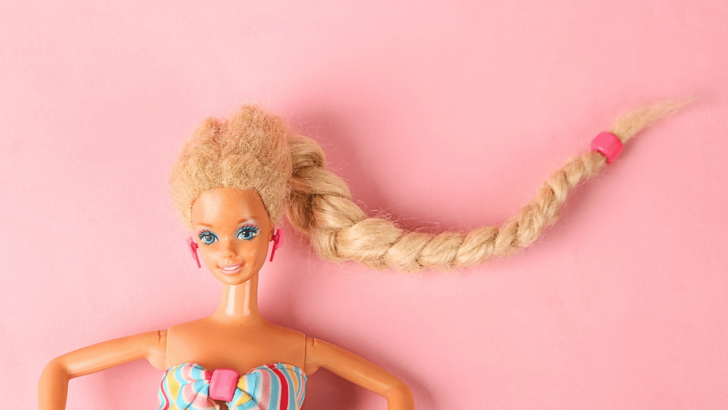Have you ever wondered if celebrities have hidden talents? Well, prepare to be amazed.
Margot Robbie, the distinguished Australian actress celebrated for her stellar performances in films like ‘The Wolf of Wall Street’ (2013) and the recently premiered ‘Barbie,’ has become a topic of intrigue.
A video from 2022 recently surfaced, featuring Robbie at the premiere of the movie ‘Amsterdam,’ communicating with a fan using sign language.
This unexpected sight naturally begs the question – is Margot Robbie adept at sign language?
Let’s delve into this fascinating topic.
Does Margot Robbie Know Sign Language?
Resurfaced 2022 footage shows Margot Robbie using Auslan, the Australian sign language, with a fan. In this video, she performs the fingerspelling alphabet, yet she’s never publicly discussed her Sign Language proficiency, stirring intrigue.
Sign Language: A Brief Overview
Sign languages, often associated with the deaf community, are complex, fully-formed languages with their own syntax, grammar, and vocabulary.
These are not simply coded versions of spoken languages but independent linguistic systems with their own cultural and social norms.
Here are some interesting facts about sign language:
- Sign languages are a type of visual language that uses hand movements, facial expressions, and postures as a means of communication.
- Each country usually has its own native sign language, and some have more than one.
- Sign languages are not universal, and they are not directly linked to the spoken language of the same country.
- Sign languages have their own grammar and syntax that are different from the spoken language.
- Sign languages express as many diverse and complex ideas as any spoken language.
- As noted by Ethnologue, a comprehensive reference work that catalogs the world’s living languages, there are currently over 140 recognized sign languages.
Contrary to popular belief, sign languages are not universally the same or mere mimed forms of spoken languages.
Each one is a fully-fledged natural language with its own unique structure and rules.
This reflects the rich cultural diversity within and across deaf communities, just as with spoken languages among hearing societies.
Let’s learn some of its key aspects to understand the complexities of sign language better.
The following table provides an overview of key characteristics that define sign languages globally:
[table id=78 /]Australian Sign Language (Auslan)
Auslan, short for Australian Sign Language, is the sign language native to Australia’s deaf community.
It originated from British Sign Language (BSL), yet it has evolved independently over the past two centuries and now has its unique characteristics and conventions.
Auslan uses two-handed signs for the alphabet, which is different from American Sign Language (ASL) that uses one-handed signs.
In terms of structure, it’s more like a visual-spatial language.
It uses space, hand shapes, movements, facial expressions, and body language to convey meaning.
This structure makes it different from spoken English – for instance, the order of words (syntax) in Auslan is not the same as in English.
It’s also worth noting that Auslan has regional variations, much like spoken languages have dialects.
Some signs can be different in Melbourne compared to Sydney, for instance.
These variations can be due to historical influences or developments within the local Deaf community.
Just like spoken languages, Auslan continues to grow and evolve over time.
It adapts to changes in society and incorporates new signs as needed, reflecting the vibrant and dynamic nature of the language and the community that uses it.
This clearly shows that she does know Auslan to a certain degree but the extent of her proficiency in the language is unknown so far.
[table id=77 /]In perspective, it’s evident from the resurfaced footage that Margot Robbie is acquainted with the basics of sign language, particularly Auslan, as displayed by her use of the fingerspelling alphabet.
Yet, the full extent of her competency remains a mystery.
She has yet to publicly comment on her sign language abilities or her fluency in Auslan.
While we can confirm she has some knowledge, the true breadth and depth of her sign language skills remain a fascinating enigma.
Another celebrity that certainly has some hidden talents, is the football star Lionel Messi.
Frequently asked questions
How many sign languages exist globally?
Ethnologue, a comprehensive reference work cataloging all of the world’s known living languages, states that there are over 140 distinct sign languages recognized worldwide.
Is Auslan similar to American Sign Language?
Auslan and American Sign Language are very distinct, and users of one may not understand the other.
Where is Auslan primarily used?
Auslan is primarily used by the deaf community in Australia.
Did Margot Robbie learn Auslan for a movie role?
As of now, there is no public record indicating that Margot Robbie learned Auslan for a movie role.
Why are there different sign languages?
Different sign languages have developed independently across the world, reflecting the cultural, historical, and social contexts of their respective communities. Like spoken languages, they evolve organically, leading to a rich diversity in sign languages.

Hey fellow Linguaholics! It’s me, Marcel. I am the proud owner of linguaholic.com. Languages have always been my passion and I have studied Linguistics, Computational Linguistics and Sinology at the University of Zurich. It is my utmost pleasure to share with all of you guys what I know about languages and linguistics in general.

